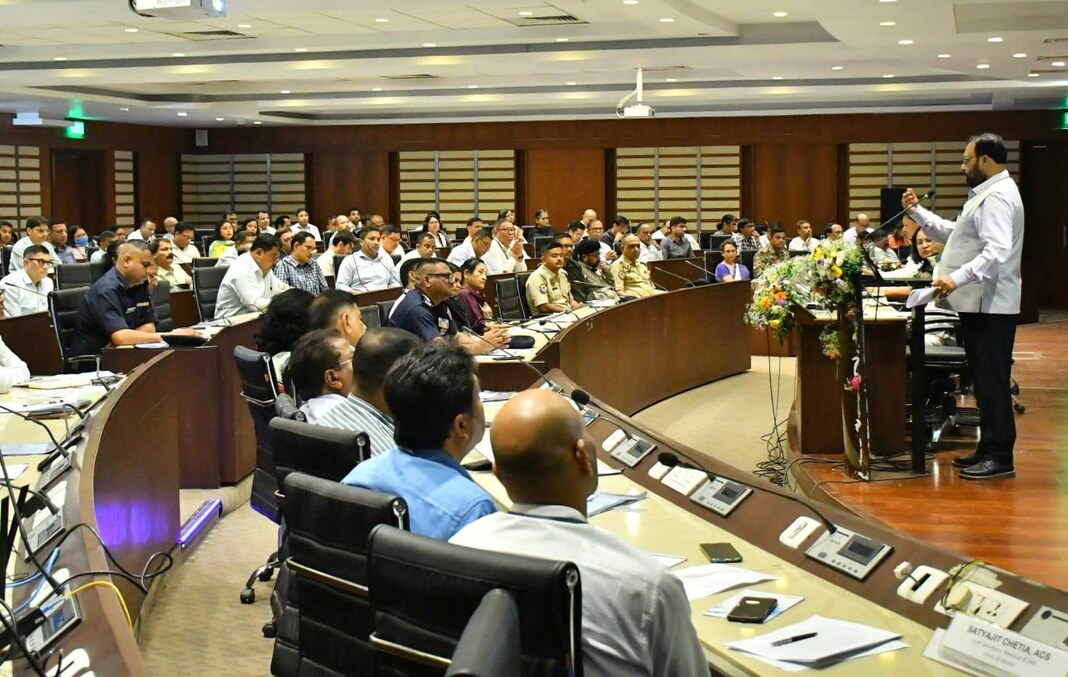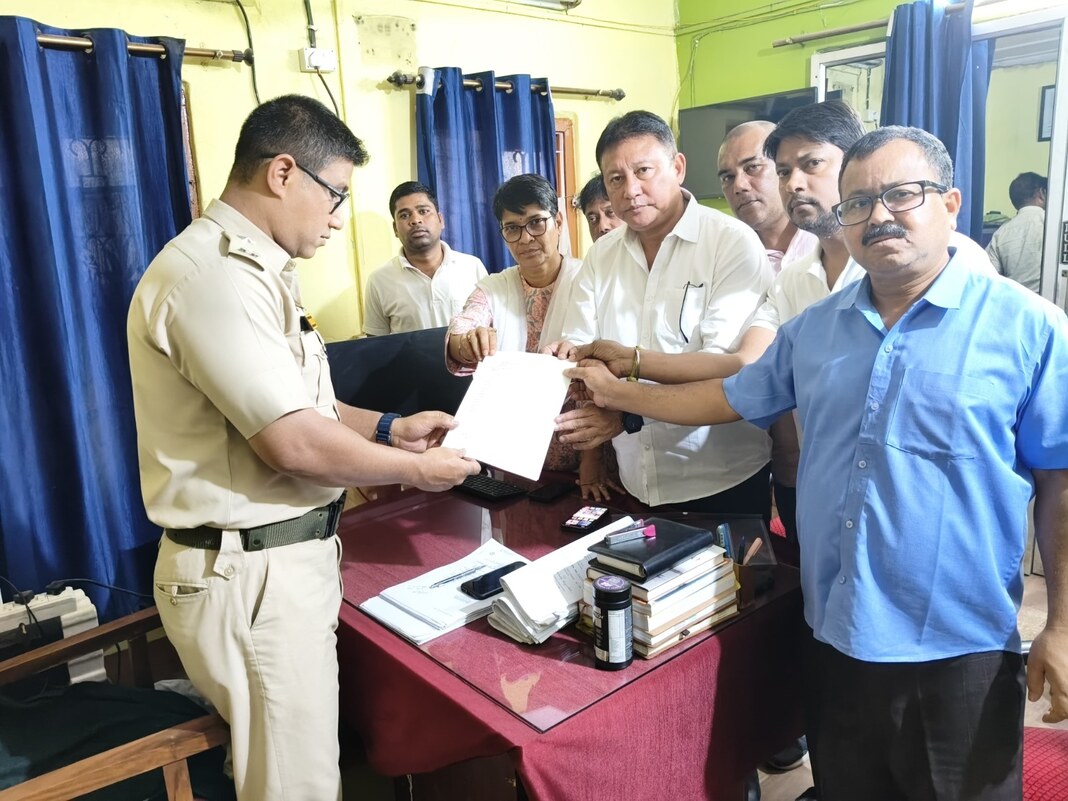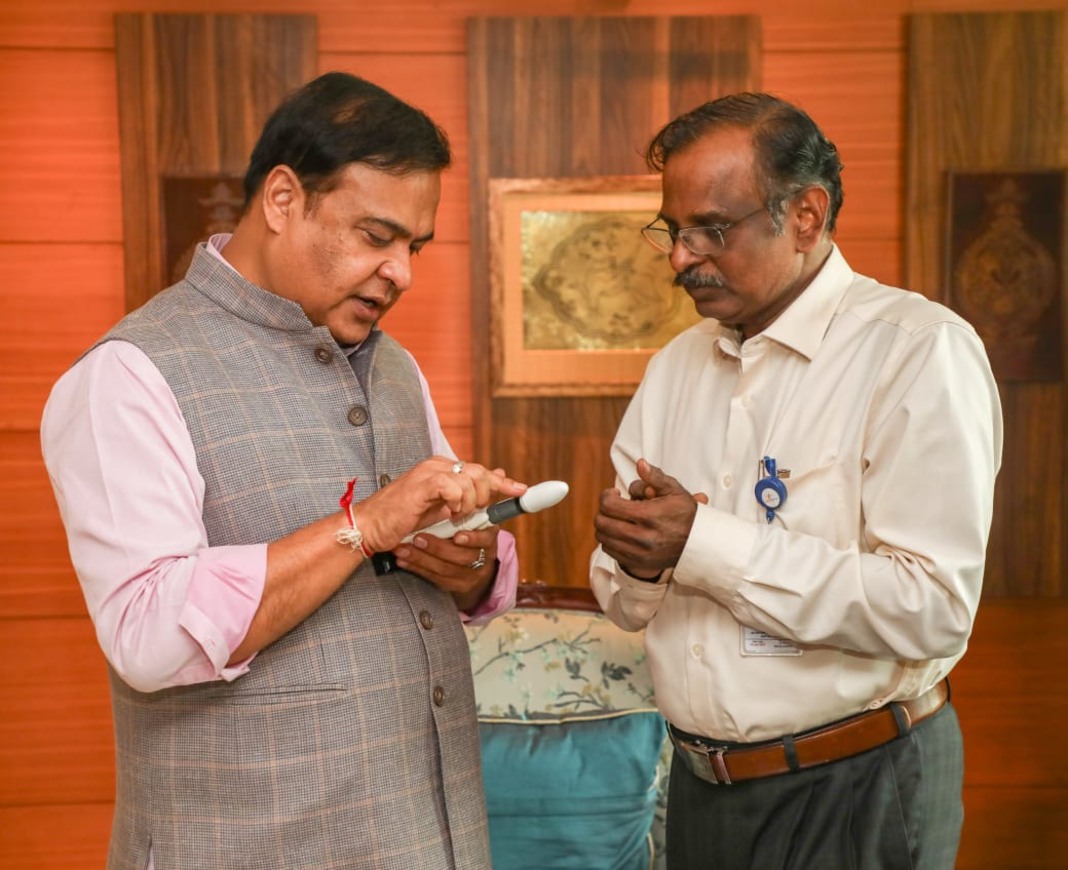
Guwahati, April 7: With the flood season fast approaching, the Assam government has stepped up its preparedness across districts, shifting focus from reactive response to proactive mitigation. Revenue and Disaster Management Minister Keshab Mahanta, who also serves as the Vice-Chairperson of the Assam State Disaster Management Authority (ASDMA), led a high-level review meeting in Guwahati on Monday to assess flood readiness across state and district levels.
Held at the Assam Administrative Staff College, the meeting brought together key stakeholders from various government departments, defence forces, central agencies, and district administrations. District Commissioners (DCs) joined via video conference to share their plans and preparedness status.
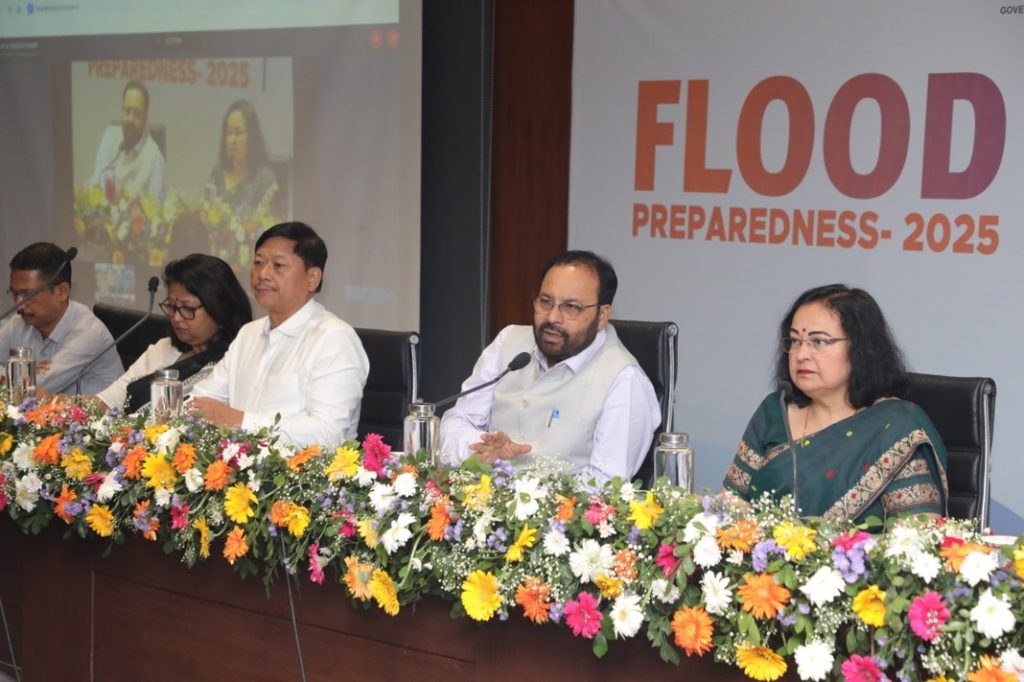
Mahanta emphasized the urgent need for district administrations to prioritize mitigation over crisis response. “Floods return year after year. It’s time we move from just reacting to building resilience. Preparedness must begin now—not when the waters rise,” he said. He urged DCs to repair infrastructure often used as relief camps, complete revenue-level mapping of flood-prone areas, and ensure that officials at revenue circle levels are trained in advance.
Meenakshi Das Nath, secretary, Revenue & Disaster Management and Additional CEO of ASDMA, briefed the minister on the state’s readiness and budget allocations for FY 2025–26. She outlined key decisions from a series of thematic meetings held in March, which shaped the state’s flood response strategy.
In the meeting, all departments are directed circulate updated flood instructions and SOPs to field officials by May 1.

Flood drills will be conducted across Assam from April 15–30 (rehearsal mode) and continue in production mode from May 1 to October 31.
NDRF teams will be strategically pre-positioned in high-risk districts including Cachar, Barpeta, Jorhat, and Dibrugarh to allow rapid deployment.
Recognizing the evolving needs of flood-affected communities, ASDMA has mandated creation of all-women task forces in model relief camps for gender-sensitive management, collaboration with UNICEF to train District Disaster Management Authorities (DDMAs) and improve camp standards, continuation of ICDS services by the Women and Child Development Department to support children and mothers in camps and integration of disability inclusion, with the Social Justice & Empowerment Department conducting on-ground assessments for all identified relief camps.

The meeting also decided to introduce new technological and educational initiatives. The Health Department will station ambulances near flood-prone zones using Google Maps for precision access. The Education Department will launch the project “Akanxhya” in Dhemaji, Barpeta, and Dibrugarh to ensure uninterrupted schooling during floods. The Public Health Engineering Department (PHED) will work with UNICEF to deploy mobile water treatment units in vulnerable areas to ensure clean drinking water.
To ensure swift administrative action during crises DDMAs must hold fortnightly task force meetings at revenue circle level during the flood season.
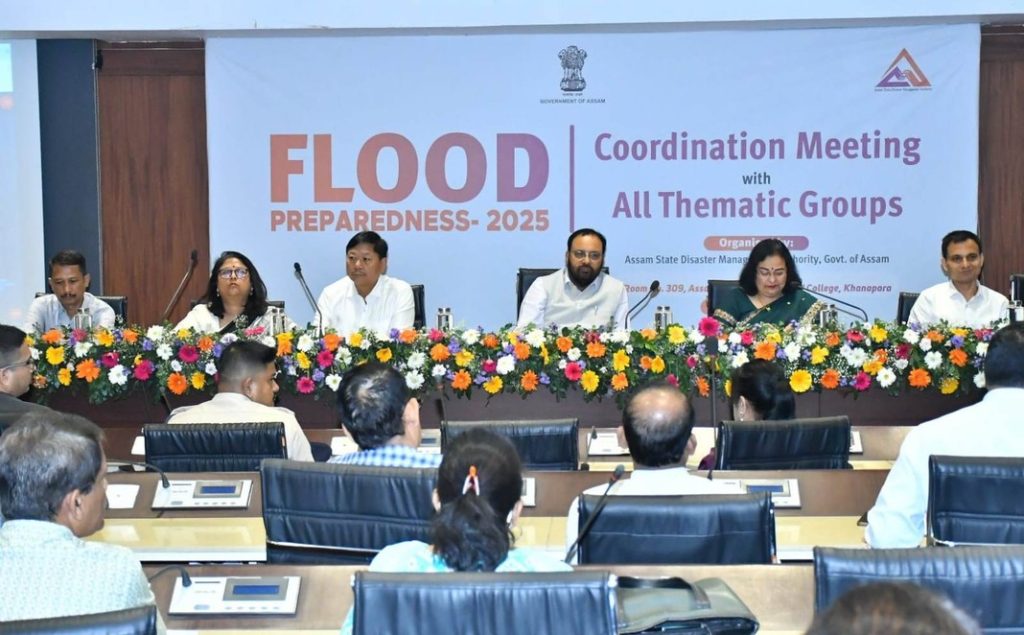
All departments will appoint nodal officers for orientation on Post-Disaster Needs Assessment (PDNA), to enable faster recovery and rehabilitation planning.
The meeting concluded with a reaffirmation of the government’s commitment to building a flood-resilient Assam. Senior officials including Dharmakanta Mili, Secretary, Revenue & DM, Hemashree Hazarika, Additional Secretary, and Shyamal Kshetra Gogoi, Joint Secretary, were present alongside representatives from defence forces, knowledge institutions, and line departments.


